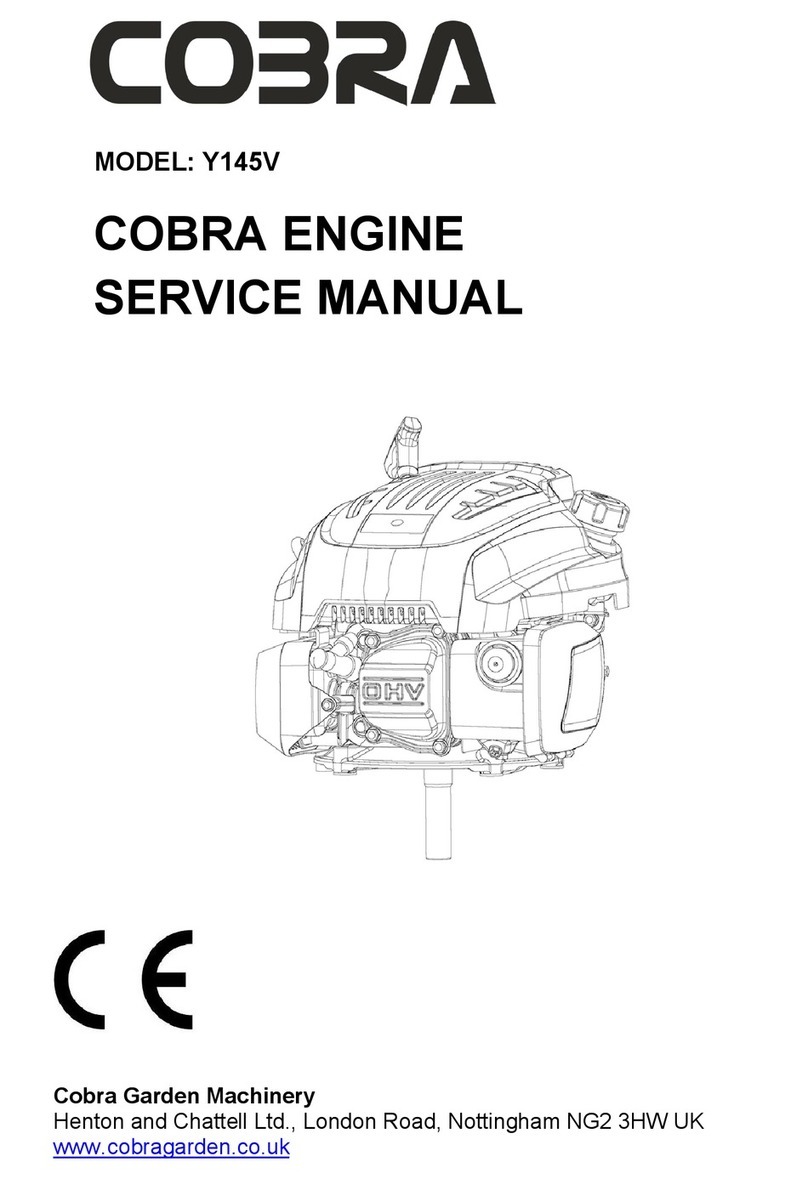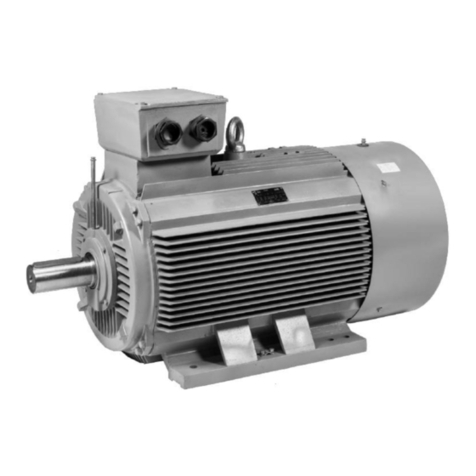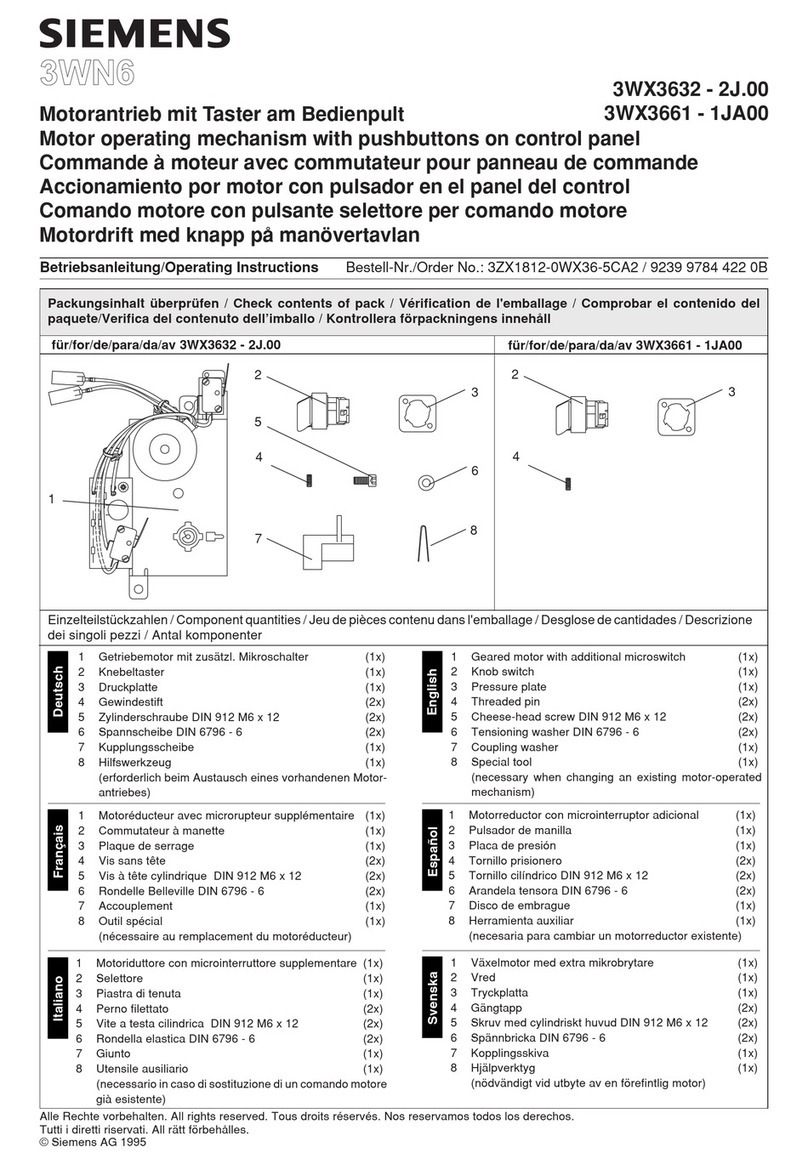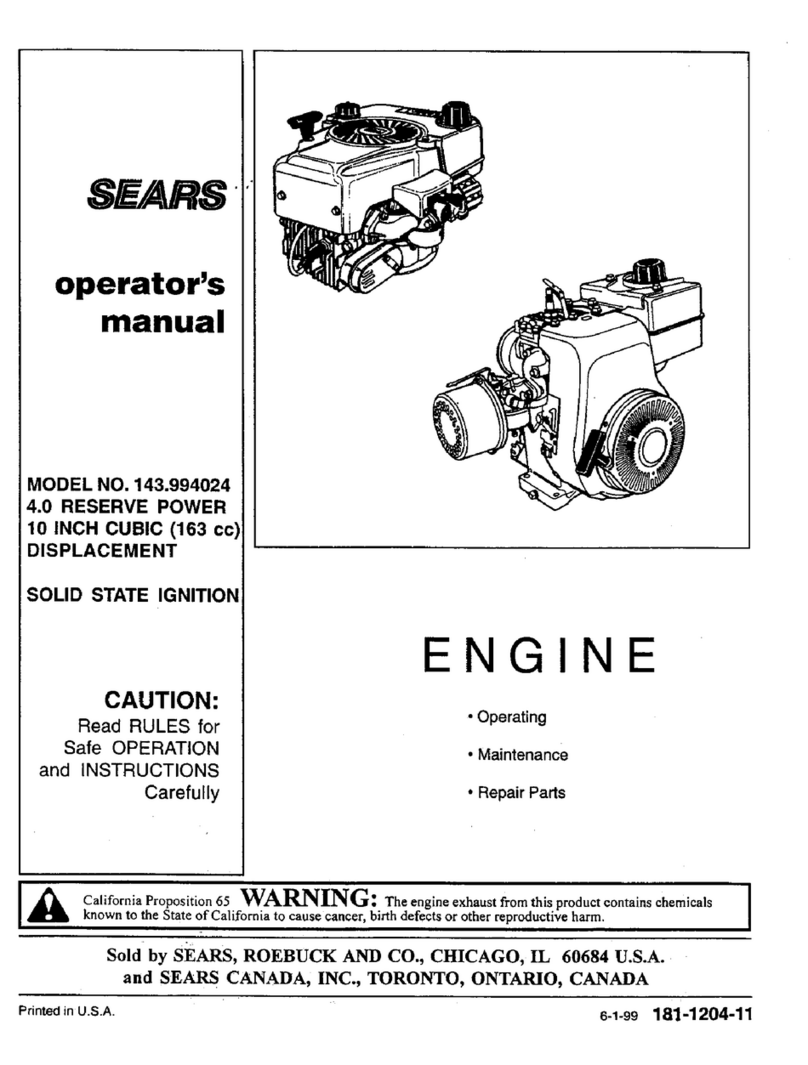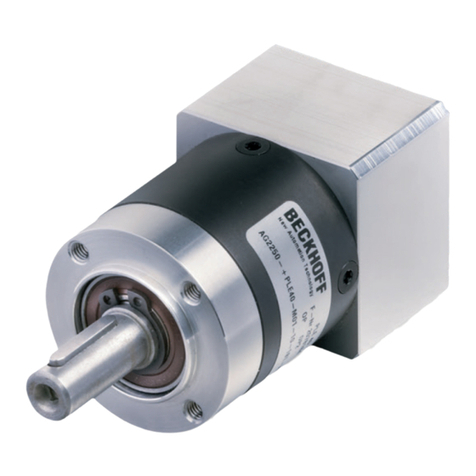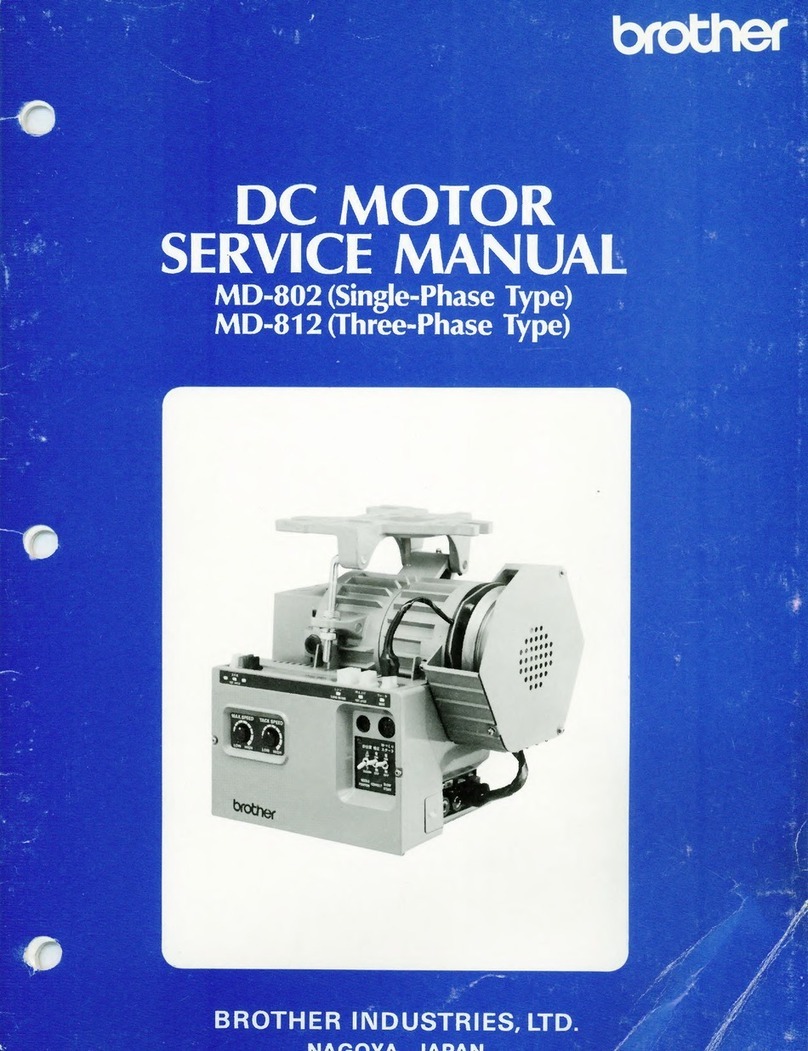Hercules JXD User manual

WINE
WW

6.
พ ฯ
บาย


|

W1.35
:
9.1706
TM
9–1706
WAR
DEPARTMENT
TECHNICAL
MANUAL
ORDNANCE
MAINTENANCE
HERCULES
JXD
GASOLINE
ENGINE
FOR
SCOUT
CARS
September
13
,
1942
1942

배
0
Ul
}

TM
9–1706
1
TECHNICAL
MANUAL
No.
9-1706
ANUAL
}
WAR
DEPARTMENT
,
WASHINGTON
,
September
13
,
1942
.
ORDNANCE
MAINTENANCE
HERCULES
JXD
GASOLINE
ENGINE
FOR
SCOUT
CARS
.
Paragraphs
SECTION
I.
General
1
II
.
Service
maintenance
2-4
III
.
Technical
inspection
5-7
IV
.
Power
plant
trouble
shooting
and
tune
-
up
while
installed
..
8-9
V.
Clutch
.
10-16
VI
.
Cooling
system
(
fan
and
pump
) .
17-21
VII
.
Electrical
-
generator
and
regulator
.
22-25
VIII
.
Electrical
—
ignition
system
26-31
IX
.
Electrical
-
starting
motor
32-38
X.
Engine
(
stripped
)
39-48
XI
.
Fuel
system
49-55
XII
.
Lubrication
system
56-59
XIII
.
Preparing
engine
for
storage
60-69
XIV
.
Consolidated
service
data
70—77
XV
.
Special
tools
and
equipment
78-82
Page
APPENDIX
.
List
of
references
320
INDEX
322
SECTION
I
GENERAL
Paragraph
Scope
1
1.
Scope
.
—
a
.
General
. —
This
manual
is
published
for
the
informa
tion
and
guidance
of
ordnance
maintenance
personnel
,
and
is
one
of
several
maintenance
manuals
on
these vehicles
.
It
contains
detailed
instructions
for
removal
,
disassembly
,
inspection
,
maintenance
,
repair
,
assembly
,
and
installation
of
the
Hercules
JXD
gasoline
engine
and
all
its
accessories
for
scout
car
M3A1
.
These
instructions
are
supple
mentary
to
those
in
the
Field
and
Technical
Manuals
prepared
for
the
using
arms
.
Additional
descriptive
matter
and
illustrations
are
included
to
aid
in
providing
a
complete
working
knowledge
of
the
matériel
.
b
.
Vehicle
generally
. -
Information
concerning
the
service
mainte
nance
,
technical
inspection
,
and
lubrication
of
the
entire
vehicle
will
be
found
in
TM
9–705
and
9–1705
.
1
37
349SU
XL
09/06
476794
°
-42
1
1914
31150-2M
me

TM
9-1706
1-4
ORDNANCE
MAINTENANCE
c
.
Power
train
.
-
For
maintenance
information
concerning
the
power
train
,
refer
to
TM
9–1705
.
d
.
Chassis
and
body
. -
For
maintenance
information
concerning
the
chassis
and body
components
,
refer
to
TM
9–1709
.
e
.
Diesel
power
plant
. —
For
maintenance
information
concerning
the
Hercules
Diesel
engine
,
model
DJXD
,
and
all
its
accessories
,
see
TM
9-1707
.
SECTION
II
SERVICE
MAINTENANCE
Paragraph
Objective_
2
Scope
..
3
Allocation
of
repair
jobs-
4
2.
Objective
.
There
is
a
decided
difference
between
the
purpose
of
organizational
maintenance
and
that
of
service
maintenance
.
Or
ganizational
maintenance
is
performed
by
the
using
arms
and
has
for
its
primary
objectives
the routine
steps
in
preventive
mainte
nance
,
together
with
the
care
and
adjustment
of
vehicles
and
their
equipment
,
so
that
the
matériel
will
be
in
good
operating
condition
and
there
will
be
a
minimum
of
time
lost
for
repairs
.
Service
maintenance
by
light
and
heavy
maintenance
units
of
the
Ordnance
Department
has
for
its
primary
objectives
supply
,
technical
inspec
tion
,
and
corrective
action
and
in
general
all
repairs
beyond
the
capacity
of
the
using
arms
.
This
work
is
accomplished
either
by
unit
replacement
,
overhauling
,
rebuilding
,
reclaiming
,
manufactur
ing
,
or
any
other
necessary
expedients
.
3.
Scope
. —
The
scope
of
maintenance
and
repairs
by
maintenance
personnel
is
determined
by
the
amount
of
time
available
,
weather
conditions
,
cover
and
concealment
,
shelter
,
proximity
or
exposure
to
hostile
fire
,
equipment
tools
and
parts
available
,
and
skill
of
the
personnel
.
Since
all
these
factors
are
variable
,
no
exact
system
or
rules
of
procedure
can
be
prescribed
or
followed
.
4.
Allocation
of
repair
jobs
.
—
The
operations
mentioned
below
augment
those
which
may
be
performed
by
the
using
arms
.
a
.
Clutch
.
(
1
)
Clutch
assembly-
Replace
,
repair
,
rebuild
.
(
2
)
Clutch
housing
Replace
.
b
.
Cooling
system
.
(
1
)
Fan
assembly
Repair
.
(
2
)
Fan
bushings
or
bearings-
Replace
.
2

TM
9–1706
HERCULES
JXD
GASOLINE
ENGINE
FOR
SCOUT
CARS
4
(
3
)
Radiator
..
Repair
.
(
4
)
Water
pump
Repair
,
replace
,
rebuild
.
c
.
Electrical
-
generator
and
regulator
.
(
1
)
Circuit
breaker
Adjust
or
repair
.
(
2
)
Generator
-----
Repair
or
rebuild
.
(
3
)
Voltage
regulator
Adjust
,
repair
,
rebuild
.
(
4
)
Current
regulator
Adjust
,
repair
,
rebuild
.
d
.
Electrical
-
ignition
system
.
(
1
)
Ignition
switch
.
Repair
.
(
2
)
Distributor
...
Repair
,
rebuild
.
e
.
Electrical
-
starter
.
(
1
)
Starting
motor
.
Repair
,
rebuild
.
(
2
)
Starting
switch
Repair
.
f
.
Engine
.
(
1
)
Camshaft
Replace
.
(
2
)
Connecting
rods
-----
Replace
.
(
3
)
Connecting
rod
bearings--
Adjust
and
replace
.
(
4
)
Crankshaft-
Grind
,
polish
,
straighten
.
(
5
)
Cylinder
----
Honeboring
.
(
6
)
Crankshaft
main
bearings
-----
Replace
.
(
7
)
Engine
-
Rebuild
,
replace
.
(
8
)
Flywheel
---
Replace
.
(
9
)
Pistons
Grind
and
fit
.
(
10
)
Piston
pins
Fit
.
(
11
)
Piston
rings-
Fit
.
(
12
)
Piston
assembly
Replace
.
(
13
)
Timing
gears-
Replace
.
(
14
)
Timing
gear
cover
Replace
.
(
15
)
Valves-
Reface
,
reseat
,
insert
,
and
re
place
.
(
16
)
Valve
guides
Replace
.
g
.
Fuel
system
.
(
1
)
Carburetor
..
Repair
and
rebuild
.
(
2
)
Fuel
pump
Repair
and
rebuild
.
(
3
)
Fuel
tank
Repair
.
(
4
)
Fuel
gage
----
Repair
.
h
.
Lubrication
system
.
(
1
)
Internal
oil
lines
Repair
,
replace
.
(
2
)
Oil
pump
----
Repair
,
replace
.
3
.:

TM
9–1706
5-7
ORDNANCE
MAINTENANCE
SECTION
III
TECHNICAL
INSPECTION
Paragraph
Description.
5
Inspection
form
----
6
Practical
application
7
5.
Description
.
-
Technical
inspections
are
a
follow
-
up
and
check
on
organizational
maintenance
inspections
and
other
maintenance
functions
.
They
determine
whether
the
vehicle
should
be
continued
in
service
or
withdrawn
from
operation for
overhaul
.
These
inspec
tions
are
covered
in
AR
850–15
.
6.
Inspection
form.-W.
D.
,
Q.
M.
C.
Form
No.
260
(
Technical
Inspection
Report
of
Motor
Vehicles
)
is
the
standard
and
official
form
for
recording
the
inspection
of
all
motor
vehicles
,
including
combat
vehicles
of
the
Ordnance
Department
.
The
extent
to
which
use
is
made
of
this
form
or a modification of
it
depends
entirely
on
the
technical
ability
of
available
personnel
,
the
time
factor
,
and
the
test
and
shop
equipment
available
.
7.
Practical
application
. — a .
External
inspection
of
clutch
.-
( 1 )
Test
foot
lever
and
make
sure of
proper
mounting
.
Examine
return
spring
for
wear
or
damage
.
(
2
)
Run
vehicle
to
ascertain
if
clutch
is
smooth
or
jerky
,
or
slips
in
operation
.
b
.
Cooling
system
.-
( 1 )
Examine
radiator
and
connections
for
signs
of
leakage
,
clogging
,
or
damage
.
(
2
)
Inspect
supporting
bracket
of
fan
and
bushings
and
bearings
.
(
3
)
Look
at
water
pump
and
casing
for
cracks
and
leaks
and
make
sure
gear
on
shaft
is
tight
and
shaft
rotates
freely
.
c
.
Generator
and
regulator
.—
( 1)
Examine
pulley
for
looseness
.
(
2
)
Check
all
shielding
conduits
and
connections
.
(
3
)
Make
sure
all
mounting
and
fastening
screws
are
tight
.
Ex
amine
armature
and
brushes
.
(
4
)
Check
voltage
and
correct
output
of
generator
.
(
5
)
Inspect
regulator
contact
points
for
burning
and gap
distance
,
and
check
tension
of
armature
springs
.
(
6
)
Examine
regulator
case
for
cracks
.
d
.
Ignition
system
.-
( 1 )
Inspect
all
harness
and
terminals
for
damage
,
wear
,
and
looseness
.
(
2
)
Examine
and
test
ignition
switch
.
(
3
)
Look
over
distributor
.
Test
for
loose
mounting
or
loose
con
nection
to
knob
on
dash
.
Remove
upper
half
shield
and
inspect
cap
1
4

TM
9–1706
HERCULES
JXD
GASOLINE
ENGINE
FOR
SCOUT
CARS
7-8
for
cracks
.
Inspect
breaker
points
and
spring
,
high
-
tension
rotor
,
and
metal
inserts
in
cap
for
pitting
and
burning
.
Try cam
for
evidence
of
wear
,
looseness
,
or
breakage
of
governor
springs
.
e
.
Starting
motor
.-
(
1
)
Examine
all
connections
and
terminals
.
(
2
)
Inspect
and
test
starting
switch
.
(
3
)
Inspect
commutator
and
brushes
.
f
.
Engine
.—
( 1)
Check
crankcase
,
block
,
head
,
and
head
gasket
for
cracks
or
leaks
.
See
that
all
bolts are
tight
.
(
2
)
Remove
cover
and
examine
valve
push
rods
,
springs
,
and
valve
clearances
.
(
3
)
Run
engine
and
listen
for
slapping
pistons
,
knock
at
bearings
,
or
knock
due
to
presence
of
carbon
.
(
4
)
Check
oil
pressure
for
steady
and
normal
reading
with
engine
running
.
g
.
Fuel
system
.-
(
1
)
Inspect
mounting
and
connections
of
fuel
pump
and
check
its
operation
.
Examine
fuel
tanks
for
leaks
or
damage
.
(
2
)
Examine
carburetor
and
air
cleaner
.
Try
all
screws
.
Inspect
connections
to
accelerator
and
dash
.
(
3
)
Check
fuel
gage
and
switch
.
.
h
.
Lubrication
system
.-
(
1
)
Check
oil
pressure
at
gage
.
(
2
)
Check
oil
line
connections
and
brackets
for
tightness
.
SECTION
IV
POWER
PLANT
TROUBLE
SHOOTING
AND
TUNE
-
UP
WHILE
INSTALLED
Paragraph
Trouble
shooting
8
Tune
-
up
9
8.
Trouble
shooting
.
Symptom
Cause
a
.
Engine
skips
or
misses
.
a
.
(
1
)
Spark
plugs
cracked
or
dirty
.
(
2
)
High
-
tension
wires
broken
or
shorted
.
(
3
)
Distributor
cap
or
rotor
broken
,
damp
,
or
dirty
.
(
4
)
Faulty
distributor
points
,
condenser
,
or
coil
.
(
5
)
Valves
adjusted
too
close
or
badly
worn
guides
.

TM
9–1706
8
ORDNANCE
MAINTENANCE
Symptom
or
1
6.
Lack
of
power
in
engine
.
c
.
Engine
vibrates
.
Cause
(
6
)
Leaking
head
gasket
.
(
7
)
Cracked
valve
seat
water
jacket
.
(
8
)
Improperly
adjusted
car
buretor
.
(
9
)
Air
leak
in
intake
manifold
or
head
.
(
10
)
Partially
plugged
gas
line
.
6.
(
1
)
Skipping
motor
.
(
2
)
Motor
out
of
time
.
(
3
)
Needs
carbon
removed and
valves
ground
.
(
4
)
Low
or
uneven
compres
sion
.
(
5
)
Motor
overheats
.
(
6
)
Mixture
too
rich
.
(
7
)
Clutch
slips
.
(
8
)
Brakes
dragging
.
c
.
(
1
)
Motor
mountings
loose
or
badly
worn
.
(
2
)
Bad
skip
in
motor
.
(
3 )
Ignition
and
timing
too
far
advanced
.
(
4
)
Idle
adjustment
set
too
rich
.
d
.
(
1
)
Circulation
plugged
in
radiator
,
causing
cool
spot
in
core
.
(
2
)
Radiator
and
block
dirty
,
retarding
circulation
.
(
3
)
Ignition
late
.
(
4
)
Brakes
dragging
.
(
5
)
Clutch
slipping
.
(
6
)
Fan
belt
slipping
.
(
7
)
Thermostat
bad
.
(
8
)
Leak
or
lack of
air
circu
lation
.
(
9
)
Radiator
fins
bent
or
clogged
.
d
.
Engine
overheats
.
6

TM
9–1706
HERCULES
JXD
GASOLINE
ENGINE
FOR
SCOUT
CARS
8
Symptom
e
.
Engine
knocks
.
f
.
Grinding
or
scraping
noise in
engine
.
Cause
e
.
(
1
)
Carbon
deposit
in
head
.
(
2
)
Spark
advanced
too
far
.
(
3
)
Automatic
spark
advance
stuck
.
(
4
)
Governor
weights
stuck
or
springs
weak
.
(
5)
Loose
wristpins
.
(
6
)
Connecting
rod
out
of
alinement
.
(
7
)
Loose
rod
bearings
.
(
8
)
Loose
main
bearings
.
(
9
)
End
play
in
cam
shaft
.
(
10
)
Loose
tappets
.
(
11
)
Sticky
valve
stems
.
(
12
)
Loose spark
plugs
.
(
13
)
Flywheel
loose
.
f
.( 1 )
Generator
bearings
worn
.
(
2
)
Water
pump
bearings
bad
.
(
3
)
Lower
fan
pulley
sprung
or
frame
sprung
so
trun
nion
hits
pulley
.
(
4
)
Broken
ring
or
piston
.
(
5
)
Flywheel
pan
bent
or
dirt
in
flywheel
pan
hitting
flywheel
.
(
6
)
Timing
chain
loose
and
rubbing
case
.
(
7
)
Oil
pan
nuts
in
flywheel
housing
hitting
against
flywheel
.
q
.
(
1
)
Piston
ring
gaps
lined
up
.
(
2
)
Piston
rings
worn
or
car
bon
in
ring
grooves
.
(
3
)
Vacuum
pump
diaphragm
cracked
or
porous
.
(
4
)
Rod
or
main
bearing
has
too
much
clearance
.
(
5
)
Oil
slinger
clearance
too
great
or
oil
slinger
oil
seal
in
housing
worn
out
.
(
6
)
Excessive
cylinder
wear
.
g
.
Engine
uses
too
much
oil
.
7

TM
9-1706
8-9
ORDNANCE
MAINTENANCE
1
Symptom
Cause
h
.
Poor
gas
mileage
.
h
.
(
1
)
Worn
-
out
spark
plugs
.
(
2
)
Timing
late
.
(
3
)
Carburetor
dirty
and
out
of
adjustment
.
(
4
)
Motor
idles
too
fast
.
(
5
)
Brakes dragging
.
(
6
)
Clutch
slips
.
(
7
)
Erratic
driving
.
(
8
)
Automatic
choke
out
of
ad
justment
.
(
9
)
Air
cleaner
dirty
or
too
full
of
oil
.
(
10
)
Automatic
heat
control
frozen
closed
.
i
.
Engine
fails
to
start
.
i
.
(
1
)
Fuel
system
clogged
or
fuel
supply
exhausted
.
(
2
)
Defective
fuel
pump
.
(
3
)
Air
vent
closed
.
(
4
)
No
spark
at
spark
plugs
.
j
.
Generator
fails
to
charge
.
j
.
(
1
)
Drive
belt
loose
.
(
2
)
Voltage
regulator
out
of
order
.
(
3
)
Generator
not
operating
properly
.
(
4
)
Poor
connections
in
circuit
.
k
.
Starting
motion
of
vehicle
k
.
(
1
)
Worn
clutch
linkage
.
jerky
or
delayed
.
(
2
)
Worn
or
oil
-
saturated
clutch
parts
—
may
also
be
out
of
adjustment
.
(
3
)
Play
in
universal
joints
.
9.
Tune
-
up
.
-
a
.
General
.
-
Best
results
are
obtained
in
an
engine
tune
-
up
by
using
a
systematic
approach
rather
than
a
hit
-
or
-
miss
search
.
Before
a
tune
-
up
is
attempted
an
engine
compression
test
should
be
made
.
Successful
tuning
is
impossible
without
a
fairly
even
compression
in
the cylinders
.
Make
compression
test
in
the
following
manner
:
(
1
)
Remove
all
spark
plugs
from
the
engine
.
Turn
ignition
switch
off
and
fully
open
hand
throttle
.
8

TM
9–1706
HERCULES
JXD
GASOLINE
ENGINE
FOR
SCOUT
CARS
9
(
2
)
Insert
an
accurate
compression
gage
in
spark
plug
hole
and
crank
engine
a
few
turns
with
starting
motor
,
noting
highest
gage
reading
.
Do
this
at
each
cylinder
.
(
3
)
Compression
should
be
the
same
in
each
cylinder
within
5
pounds
.
b
.
Procedure
. —
If
compression
is
found
to
be
correct
in
all
cylin
ders
,
proceed
with
the
tune
-
up
in
the
following
order
:
(
1
)
Spark
plugs
.-
( a )
Spark
plugs
should be
Champion
,
model
J8
,
type
14MM
,
or
other
make
of
same
model
and
type
.
(
6
)
Clean
the
plugs
thoroughly
.
(
c
)
Inspect
closely
for
cracked
porcelain
.
(
d
)
Set
electrode
gap
between
0.025
and
0.028
inch
.
Use
a
round
feeler
gage
.
Bend
side
electrode
when
regapping
.
(
2
)
Battery
and
ignition
cables
.-
(a )
Clean
both
ends
of
each
bat
tery cable
thoroughly
.
See
that
connections
are tight
.
(
6
)
Inspect
ignition
system
high-
and
low
-
tension
cables
.
Ter
minal
on
each
end
must
be
clean
and
tight
.
If
insulation
shows
evi
dence
of
deterioration
,
cable
should
be
replaced
.
(
3
)
Distributor
.-
( a )
Remove
distributor
cap
and
inspect
it
care
fully
for
cracks
and
burned
posts
.
(
6
)
Remove
rotor
,
clean
contact
point
,
and
make
sure
spring
con
tacts
secondary
terminal
.
(
c
)
Clean
distributor
points
with
a
flat
point
file
.
Inspect
care
fully
and
replace
if
cleaning
does
not
remove
pits
and
burns
.
Never
use
emery
cloth
to
clean
points
.
(
d
)
Adjust
points
with
feeler
gage
to
provide
0.018
to
0.020
inch
clearance
.
Be
sure that
breaker
cam
is
in
position
to
have
points
fully
separated
.
(
e
)
Check
condenser
.
A
weak
condenser
usually
results
in
burned
breaker
points
.
A
good
check
is
the
comparison
test
,
replacing
the
old
with a
good
condenser
and
observing
for
contrast
in
the
spark
.
The
spark
from
a
faulty
condenser
will
form
an
are
or
drag
between
the
points
.
(
f
)
Check
ignition
coil
with
coil
tester
.
Replace
weak
coil
.
(
4
)
Ignition
tuning
. –
Check
ignition
timing
to
be
sure
that
No.
1
cylinder
is
firing
according
to
flywheel
markings
.
This
is
done by
attaching
one
end
of
a
neon
timing
light
to
No.
1
spark
plug
and
grounding
the
other
end
.
Run
the
engine
at
an
idle
speed
and
note
whether
the
neon
flashes
coincide
with
the
markings
on
the
flywheel
.
Distributor
can
be
retarded
or
advanced
until
neon
flashes
are
per
fectly
synchronized
with
the
flywheel
markings
.
9

TM
9–1706
9
ORDNANCE
MAINTENANCE
1
1
1
(
5
)
Valve
clearance
.-
( a )
Remove
the
valve
covers
and
adjust
the
push
rod
screw
to
valve
stem
clearance
to
0.006
inch
on
both
intake
and
exhaust
valves
.
Be
sure
engine
is
thoroughly
warmed
before
adjustment
.
(
6
)
Make
a
visual
inspection
for
evidence
of
cracked
valve
spring
coils
or
scored
valve
stems
.
(
6
)
Carburetor
.-
( a )
Remove
bottom
bowl
of
air
cleaner
by
loos
ening
winged
nut
on
each
side
.
Clean
out
all
old
oil
and
dirt
.
Refill
to
oil
level
groove
with
new
engine
oil
and
install
.
Filtering
element
should
never
be
removed
from
cleaner
.
(
6
)
Inspect
carburetor
flange
and
intake
manifold
gasket
for
leaks
.
(
c
)
Check
carburetor
float level
as
described
in
section
XI
.
(
d
)
If
necessary
,
adjust idling
screw
until
engine runs evenly
and
steadily
with
leanest
possible
mixture
.
Engine
should
be
thoroughly
warmed
before
adjusting
carburetor
.
(
e
)
Clean
carburetor
fuel
filter
.
(
7
)
Fuel
pump
.-
( a )
The
pressure
from
the
fuel
pump
is
measured
with
a
fuel
pump
pressure
and
vacuum
gage
.
Connect
adapter
tee
into
fuel
pump
outlet
line
and
connect
gage
hose
to
adapter
tee
outlet
(
fig.
193
)
.
Normal
pressure
should be
between
21/2
and
4
pounds
.
This
gage
is
also
used
to
check
the
vacuum
condition
in
the
vacuum
pump
.
Connect
hose
to
pump
inlet
.
When
motor
is
running
,
this
vacuum
should
pull
from
8 to
10
inches
.
(
6
)
Remove
sediment
bowl
and
screen
for
cleaning
.
(
c
)
Inspect
for
worn
parts
and
replace
if
necessary
.
C.
Vacuum
tests
. -
A
vacuum
gage
is
a
useful
aid
in
an
engine
tune
-
up
.
Before
testing
be
sure
that
engine
is
thoroughly
warmed
.
The
gage
is
attached
at
the rear of the
intake
manifold
.
Gage
readings
indicate
condition
of
vacuum
existing
in
all
the
space
of
the
intake
manifold
between
the
throttle
valve
and
the
piston
on
the
suction
stroke
.
Take
readings
with engine
running
at
500
rpm
unless
otherwise
specified
.
(
1
)
Normal
engine
. A
normal
engine
pulls
a
vacuum
of
18 to
21
inches
.
The
vacuum
reading
will
drop
to
about
2
inches
when
the
throttle
is
opened
and
will
rebound
to
about
25
inches
when
throttle
is
closed
.
(
2
)
Steady
needle
,
slightly
low
vacuum
. -
If
the
engine
pulls
a
vacuum
of
13 to 16
inches
with
a
steady
needle
,
it
would
indicate
the
possibility
that
the
piston
rings
or
oil
is
in
poor
condition
.
With
slight
needle
motion
it
would
indicate
late
ignition
timing
.
10

TM
9–1706
HERCULES
JXD
GASOLINE
ENGINE
FOR
SCOUT
CARS
9-10
(
3
)
Steady
needle
,
low
vacuum
. -
If
the
vacuum
is
between
8
and
12
inches
,
the
trouble
might
be
caused
by
loose
valve
guides
,
worn
piston
rings
,
poor
oil
,
or a
manifold
leak
.
(
4
)
Steady
needle
,
very
low
vacuum
. -
If
the
vacuum
should
drop
below
5
inches
with
a
steady needle
,
the
trouble
is
undoubtedly
a
manifold
leak
.
(
5
)
Gradual
drop
.
-
If
a
normal
reading
is
obtained
when
the
engine
starts
and
the
needle
gradually
drops
,
the
trouble
would
probably
be
found
in
the
exhaust
system
-
probably
a
choked
muffler
.
(
6
)
Irregular
drop
,
normal
vacuum
. -
If
the
engine
pulls a
normal
vacuum
but
the
needle
drops
at
irregular
intervals
,
the
trouble
might
be
caused
by
gummy
valve
stems
,
rich
mixture
,
lean
mixture
,
or
defective
spark
plugs
.
(
7
)
Regular
drop
,
normal
vacuum
. -
A
periodic
drop
or
regular
drop
with
a
normal
vacuum
indicates
a
chipped
valve
,
a
burned
valve
,
a
leaky
valve
,
or
a
head
gasket
leak
.
(
8
)
Slow
movement
,
low
vacuum
. -
A
low
vacuum
with
a
slowly
moving
needle
might
indicate
late
valve
timing
,
poor
carburetor
adjustment
,
defective
spark
plugs
,
poor
ignition
,
or
gummy
valve
stems
.
(
9
)
Wide
variations
.
An
oscillating
needle
over
a
wide
range
with
the
variation
increasing
with
increased
speed
indicates
weak
or
broken
valve
springs
.
SECTION
V
CLUTCH
Paragraph
Description
---
10
Troubleshooting
11
Removal
of
assembly
.
12
Disassembly
13
Maintenance
14
Assembly
15
Installation
16
10.
Description
(
fig
.
1
)
.—
The
clutch
assembly
is
bolted
to
the
engine
flywheel
.
It
is
the
dry
disk
,
single
plate
type
,
incorporating
a
mechanical
vibration
dampener
and
automatic
adjustment
to
com
pensate
for
wear
.
a
.
Construction
(
fig
.
2
)
.—
The
flywheel
forms
a
part
of the
clutch
housing
and
also
acts
as
the
front
plate of
the
clutch
.
Friction
ma
terial
is
riveted
to
both
sides
of
the
driven
plate
.
Between
the
rear
lining
and
disk
are
six
crimped
spring
steel
segments
which
consti
tute a
cushioning
effect
for
smooth
operation
.
A
circle
of
six
coil
11

TM
9–1706
10
ORDNANCE
MAINTENANCE
springs
is
installed
in
the
hub
of
the
driven
plate to
eliminate
tor
tional
vibration
.
The
clutch
coverplate
contains
the
pressure
plate
,
release
levers
,
lever
yokes
with
tension
springs
,
and
adjusting
nuts
,
and
pressure
springs
and
their
retainers
.
The
release
levers
and
the
lever
yokes
are
supported
on
needle
bearings
.
The
pressure
springs
are
held
in
cups
riveted
onto
the
cover
plate
and
recessed
into
the
pressure
plate
.
Insulator
buttons
are
used
under
the springs
on
the
pressure
plate
to insulate
the
springs
from
heat
conducted
to
the
pressure
plate
.
Ball bearings
packed
with
grease
at
assembly
are
used
on
the
clutch
shaft
for
the
pilot
and
clutch
release
bearings
.
SCREW
,
CAP
-
BCAXICD
WASHER
LOCK
-
BECXIK
MEMBER
.
ASS'Y
LM
-
CM
-
4137
(
SCA
)
LM
-
CM
-
4515
(
SCB
)
M
COVERPLATE
ASSY
.
LM
-
CM
-
4348
RA PD
3235
FIGURE
1.
–
Clutch
assembly
installed
.
b
.
Functioning
.
–
Depression
of
the
clutch
pedal
moves
the
clutch
pressure
plate
away
from
the
driven
plate
,
which
is
then
disengaged
from
the
engine
flywheel
drive
plate
,
thus
releasing
the
clutch
and
disengaging
the
transmission
from
the
engine
.
This
is
accomplished
by
the
connection
of
levers
from
the
clutch
pedal
to
the clutch
throw
out
bearing
,
which
is
mounted
on
the
splined
clutch
shaft
and
engages
with
the
pressure
plate
release
levers
that
control
the
move
ment
of
the
plate
.
Engagement
of
the clutch
is
the
reverse
pro
cedure
.
12

TM
9–1706
HERCULES
JXD
GASOLINE
ENGINE
FOR
SCOUT
CARS
10
1
FACING
-
LM
-
0-3593
-PLATE
-LM
-
C
-
3567
FACING
-LM
- C
-
3593
(
OR
)
FACING
-
LM
- C -
4263
PLATE
-LM
- C
-
3594
ROLLER
-LM
-
C -
3077
PIN
,
ROD
-
LM
-
C
-
3141
PIN
,
COTTER
-
BFAXICD
NUT
-LM
-C
-4345
SPRING
-
LM
-
C -
4346
YOKE
-LM
- C
-
4344
PIN
,
ROD
-
LM
-
C -
3142
PLATE
-
LM
-
C
-
3076
RIVET
-LM
-
C
-
3429
SPRING
-LM
-
C
-
3517
(
OR
)
SPRING
-
LM
- C -
3831
WASHER
-
LM
- C -
3568
LEVER
-
LM
- C -
3390
HUB
-
LM
-
C
-
3677
-
RA
WASHER
-
LM
-
C -
3569
BOLT
-LM
- C
-
3523
SPRING
-LM
-
C
- 3522
WASHER
-
LM
- C -
3569
NUT
-LM
-C
-
3524
PIN
-
LM
-
C
-
3521
RIVET
-LM
-
C
-
3006
-NUT
-
LM
-C
-
1404
PARTS
WHICH
WASHER
-
LM
- C -
1061
MAY
BE
USED
WEIGHT
-
LM
-
C
-
3328
FOR
BALANCE
SCREW
-
LM
- C
-
3329
BUTTON
-
LM
- C -
2085
SPRING
-LM
-
C -
3431
-COVERPLATE
-
LM
-
C
-
4343
RIVET
-
BMCXI
-CUP
-LM
-
C
-
3437
N
°
5835
LONG MFG
.
DIV
.
N
°
5875
Nº
63584
WHITE
MOTOR
CO
.
N
°
312952
ORDNANCE
N
°
D
33797
CLUTCH
,
ASS'Y
RA
FSD
1820B
FIGURE
2.
—
Clutch
(
long
) ,
sectionalized
.
13
Table of contents
Popular Engine manuals by other brands
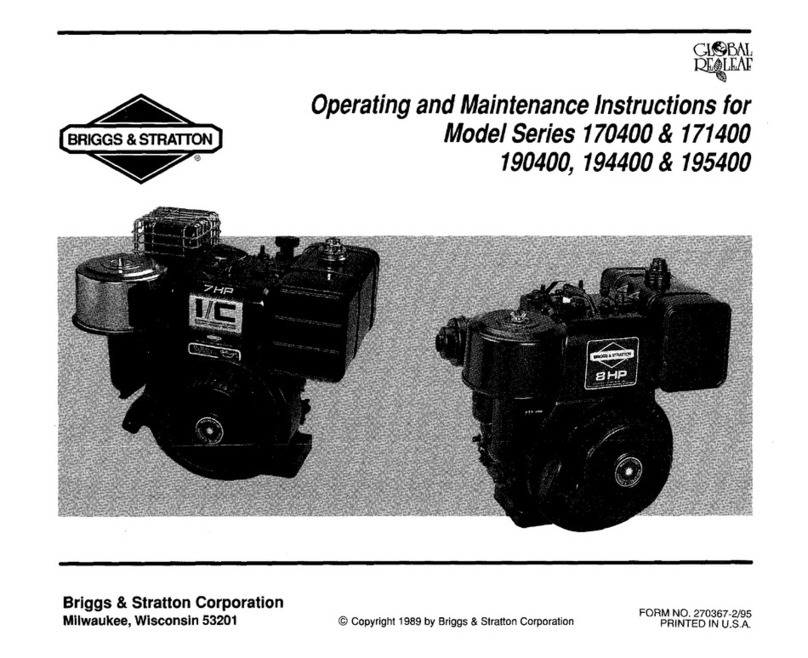
Briggs & Stratton
Briggs & Stratton Sno/Gard 170400 Series Operating and maintenance instructions
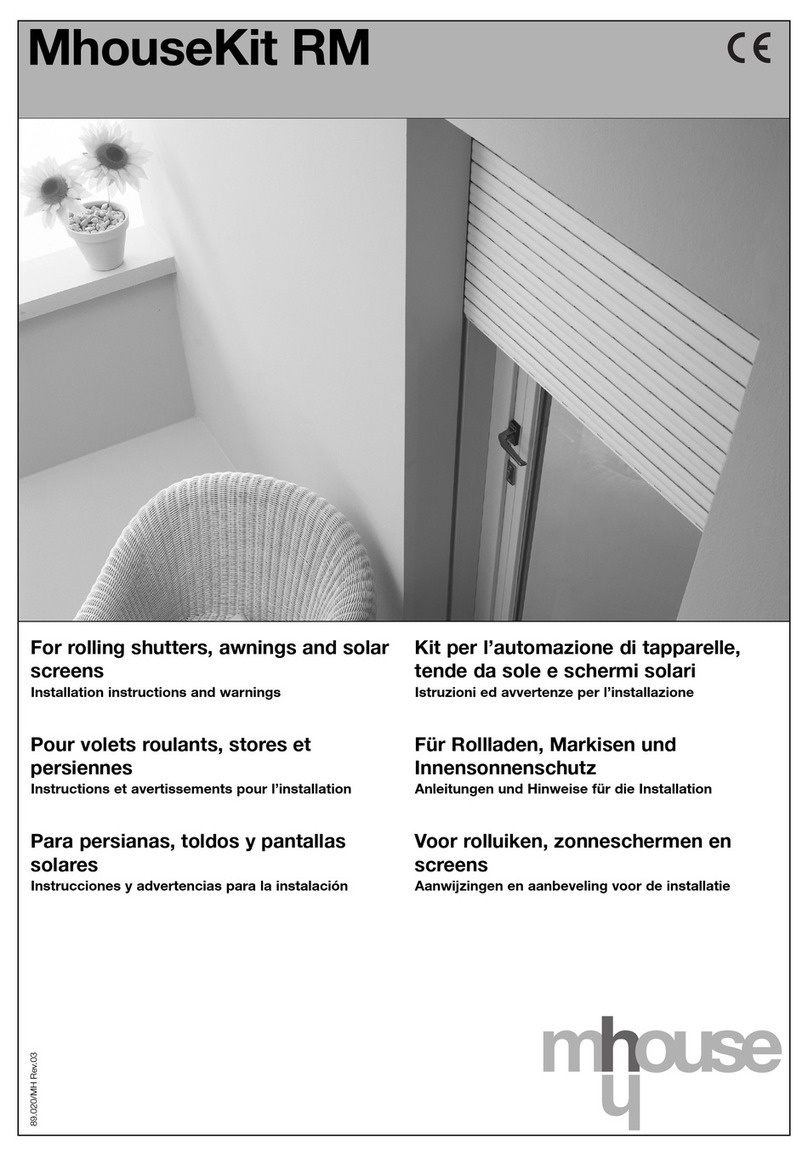
Mhouse
Mhouse MhouseKit RM Installation instructions and warnings
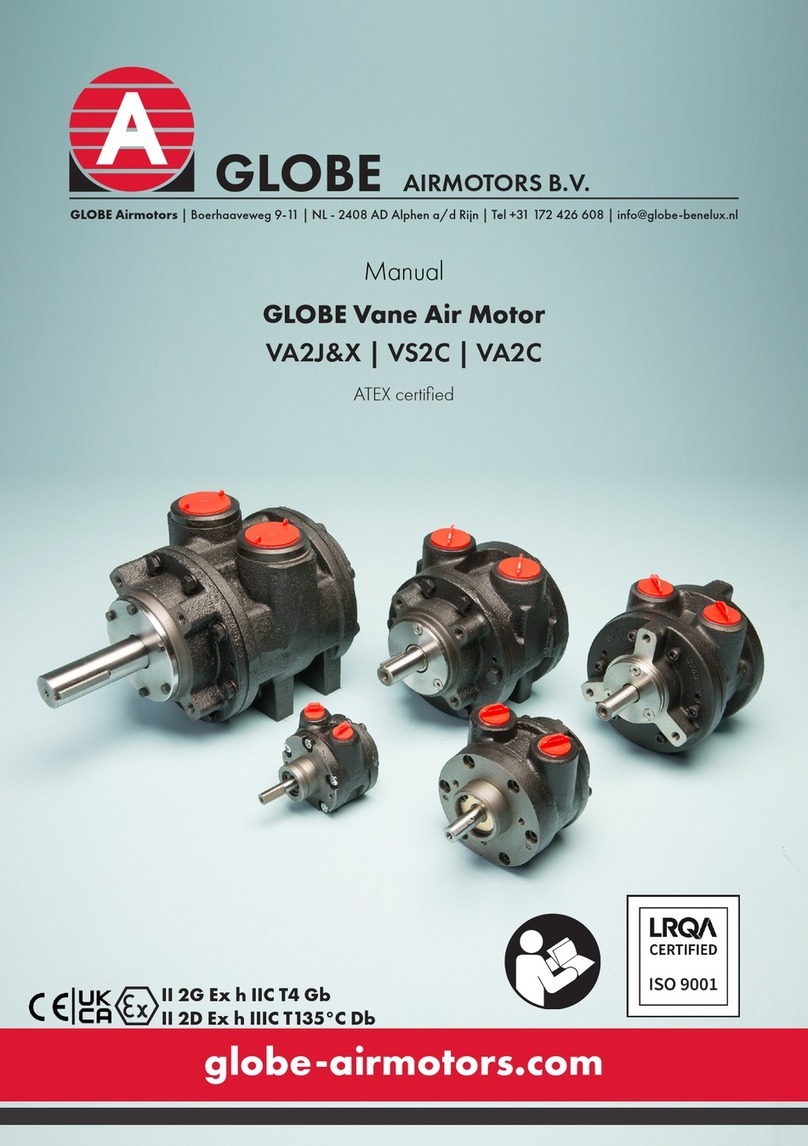
Globe
Globe VA2J manual
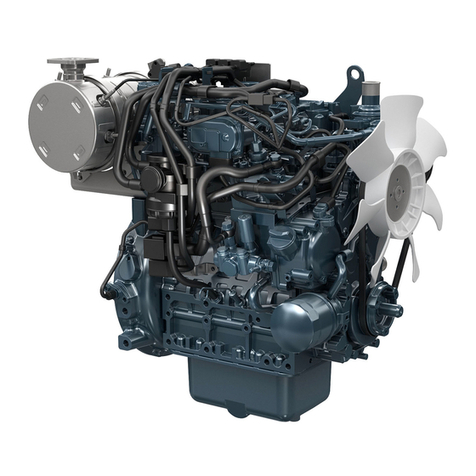
Kubota
Kubota D1803-CR-TIE4B-KEA-2 installation instructions

Briggs & Stratton
Briggs & Stratton 190707 Service manual

HPI Racing
HPI Racing Nitro Star T-15 instructions

